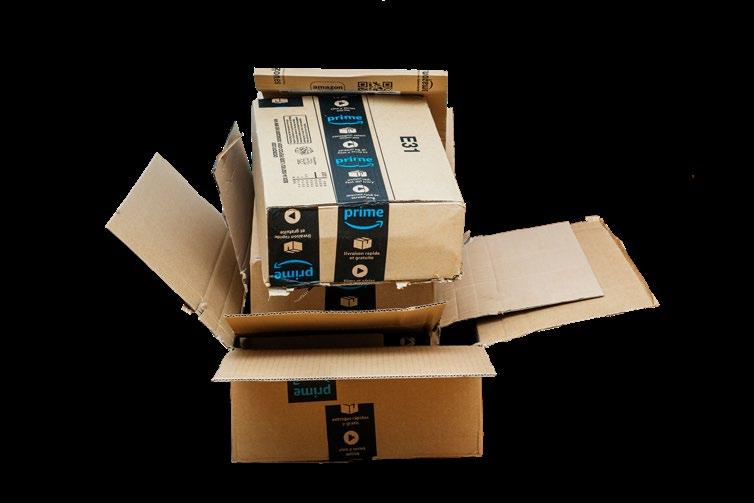
3 minute read
E-commerce growth and plastic packaging
• Almost a third of the world's population is now buying online23 • Amazon dominates the e-commerce market in almost all countries in which it operates24,25,26 • The e-commerce industry used nearly 2.9 billion pounds (1.3 billion kg) of plastic packaging in 202027
2020 was marked by the COVID-19 pandemic which drove an enormous surge in e-commerce shopping. Consumers around the world increasingly made online purchases from home.
The number of overall online buyers is forecast to reach 2.1 billion in 2021, up from 1.66 billion in 2016.28 More than a quarter of the world's population is now buying products online, and COVID-19 has further accelerated this shift. Estimated at $3.35 trillion in 2019, pandemic-driven e-commerce sales rose sharply by 27.6% in 2020 to $4.28 trillion and are expected to reach $6.39 trillion in 2024.29
Amazon, the leading e-commerce retailer in almost all large markets, reportedly recently surpassed Walmart’s sales to become the largest retailer – online and offline – in the Western world. Only China has retail companies with larger operations.
Amid this surge of online buying, the amount of e-commerce plastic packaging worldwide has been estimated to have grown by 24% in 2020, with the highest growth in the Middle East (+60%).
Globally, the e-commerce industry used nearly 2.9 billion pounds (1.296 billion kg) of plastic packaging in 2020, according to analysts, and that number is estimated to more than double by 2026, as shown in Table 1. The highest growth by volume is expected for flexible plastic and plastic mailer markets over the medium term. This is the type of secondary or protective packaging (e-commerce packaging) that Amazon adds on top of the original product packaging after it is ordered online.
Packaging in e-commerce is often superfluous. As much as 98% of product packaging shipped in e-commerce was created for brick and mortar retail and to get potential buyers' attention browsing in a store rather than to be optimized for shipping to customers who purchased the product online. Leading industry analysts estimate that half of e-commerce packages ship with up to 55% empty space.30
THE E-COMMERCE INDUSTRY PRODUCED 2.9 BILLION POUNDS OF PLASTIC PACKAGING WASTE IN 202031
Table 1. Total e-commerce industry’s annual plastic packaging waste
YEAR 2020 2021 2022 2023 2024 2025 2026 million kg 1,296 1,610 1,834 2,096 2,403 2,763 3,189
million pounds 2,857 3,549 4,044 4,621 5,297 6,091 7,031
As shown in Figure 1 below, protective packaging (including bubble wrap and the kinds of air pillows that Amazon frequently uses) makes up 1 billion pounds (456 million kg), or 35%, of total plastic packaging weight. Plastic pouches and bags (including Amazon mailers, envelopes, bags, and bubble-lined bags) make up more than 894 million pounds (406 million kg), or 31%, of total plastic packaging weight. Shrink films make up 348 million pounds (158 million kg), or 12%, of total plastic packaging weight, and 609 million pounds (276 million kg), or 21%, of the total weight, are a mix of other plastic products like foams or gel packs.32
BUBBLEWRAP, AIR PILLOWS, AND PLASTIC MAILERS ARE UBIQUITOUS
Figure 1. Global e-commerce plastic packaging market by product type, 2020
2020
POUCHES AND BAGS
894 MILLION POUNDS
31.3%
OTHER PRODUCT TYPES
SHRINK FILMS
609 MILLION POUNDS
348 MILLION POUNDS
PROTECTIVE PACKAGING
1006 MILLION POUNDS
12.2%
21.3%
35.2%
Source: Mordor Intelligence









